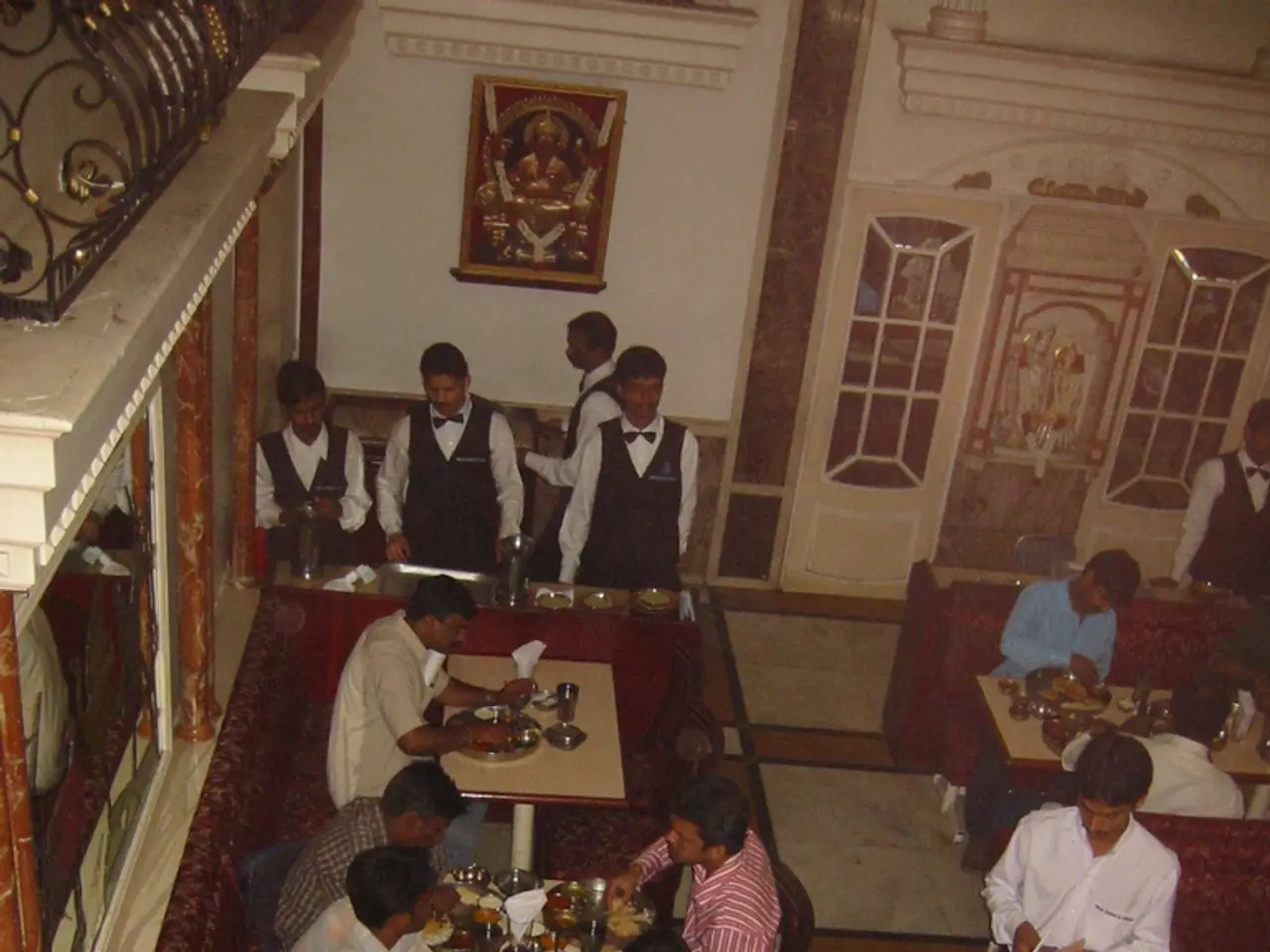Food Delivery Profit Generator: Exploiting Opportunities in the Culinary Revolution of Takeout Services
In the dynamic world of food service, ghost kitchens are making a significant impact. These delivery-only facilities, devoid of dine-in areas, are redefining the industry by offering a scalable, cost-effective, and delivery-centric business model.
The current trends in the ghost kitchen industry in 2025 highlight both evolving opportunities and emerging challenges. One key trend is the digital-first and delivery-focused model, which optimizes efficiency and aligns with consumer preferences for delivery and takeout. Many ghost kitchens host several virtual brands under one roof, allowing operators to diversify offerings and cater to varied tastes while maximizing kitchen utilization.
The lower real estate and staffing costs, compared to traditional restaurants, allow for experimenting with new culinary concepts and quickly adapting to market trends without the overhead of a physical storefront. Robust technology backbones enable speed, accuracy, and scalability, while data-driven insights from digital orders support menu optimization and operational decisions.
Ghost kitchens provide a lower-risk environment for new ventures, including home bakers and specialty food providers, enabling them to scale production and reach customers without large capital investments. Some operators use ghost kitchens as centralized production units with advanced infrastructure, potentially reducing waste and improving compliance with health and safety standards.
However, the sector faces hurdles in regulation, brand differentiation, and operational efficiency. Investment peaked around 2021 but has since contracted, with some companies downsizing, reflecting a market correction and the need for sustainable business models. Building brand awareness in a crowded online marketplace is a continuous challenge.
Managing multiple menus and brands can strain kitchen staff and technology, risking slower preparation times, quality control issues, and cross-contamination challenges. Navigating zoning laws, health department approvals, and insurance requirements is complicated by the unique nature of ghost kitchens. These rules vary by location and require diligent management to avoid disruptions.
Depending on third-party delivery services can impact margins and customer experience. Major brands and delivery platforms, however, continue to embrace the ghost kitchen model, indicating immense potential for growth. Chick-fil-A operates delivery-only locations, serving areas without physical restaurants, and major chains like Chick-fil-A and Wendy's are adopting the ghost kitchen model to focus on delivery, reduce overhead, and enter new markets efficiently.
Food delivery platforms like Uber Eats and DoorDash have grown due to the rise of ghost kitchens, providing essential infrastructure and customer reach. Rebel Foods, a ghost kitchen network in India, houses multiple brands under one roof and fine-tunes menus to match localized tastes, driving growth and customer loyalty.
In summary, while ghost kitchens continue to revolutionize the food industry by enabling cost-effective, scalable, and delivery-centric operations, the sector faces hurdles in regulation, brand differentiation, and operational efficiency that require innovative solutions and strategic focus. The future of food service may well be found in these digital-first, delivery-focused facilities.
- The data-driven insights from digital orders in the growing ghost kitchen industry in 2025 are crucial for menu optimization and operational decisions, enabling a scalable and delivery-centric business model.
- The digital-first and delivery-focused model in ghost kitchens, aligned with consumer preferences, optimizes efficiency and helps cater to varied tastes by hosting several virtual brands under one roof.
- In the dynamic world of food-and-drink businesses, technology plays a significant role in supporting speed, accuracy, and scalability in ghost kitchens, making it possible for entrepreneurs to experiment with new culinary concepts.
- The advancements in data-and-cloud-computing infrastructure in ghost kitchens help reduce waste and improve compliance with health and safety standards, offering a lower-risk environment for new ventures like home bakers.
- The business of cooking and lifestyle, with a focus on delivery and takeout, has gained significance in the industry, with companies like Chick-fil-A and Wendy's adopting the ghost kitchen model to reduce overhead and efficiently enter new markets.




